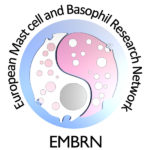Mast cell inhibitory receptors
Mast cells receptors – general description Mast cells (MC) are key effector cells in allergic inflammation (AI) but are also involved in regulating fibrosis, in tissue responses to neoplastic diseases, in autoimmune diseases and in host‑defense against bacterial and parasitic infections [1]. In allergy, the
